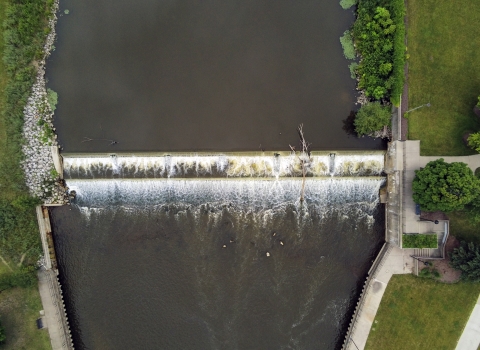Wildlife officials remind ocean-goers to give sea otters and other coastal wildlife space. Avoid feeding or approaching wildlife, and if wildlife approaches you, back up and leave the immediate area. We’re just having fun, but this is where they eat, rest, and raise their young. Let’s work together to keep wildlife healthy and wild.
Summer is here, and many of us are going to be out recreating on the ocean. We share these waters with sea otters and other coastal wildlife. While getting up close and personal with a sea otter may seem adorable and harmless, it does cause harm and sets a bad example when it comes to how we interact with wildlife. Sharing photos and videos of close wildlife encounters causes further harm by encouraging others to seek out those interactions as well.
Rest is essential for sea otters because they spend a large proportion of their time and energy each day locating and consuming prey. Since they are not equipped with blubber like whales and seals, they rely on their fur coat and high metabolic rate to stay warm. The average adult sea otter has to eat the equivalent of 20 to 30 percent of its body mass in food each day just to meet its energy requirements. That's why it's so important for sea otters to conserve their energy.
Foraging is hard work, and sea otters need resting time to digest and recover. That’s what they are doing when you see them floating on their backs on the water's surface—and their survival depends on it. Disruption of resting periods imposes serious energetic costs on sea otters, especially moms with dependent pups.
If you’re out on the water with others who think it’s ok to get close since it’s just this once, you can help by urging them to think again. Research shows that sea otters living in urbanized areas of California are disturbed by people an average of nine times each day! Repeated disturbance depletes their energy reserves and may turn a naturally wary sea otter into an aggressive one. Let’s work together to keep sea otters healthy and wild. That means never feeding sea otters and keeping a safe distance so they can rest, feed, and take care of their pups.
- Never feed sea otters, as they can become aggressive, which could result in their removal from the wild.
- Be aware of your surroundings and alert to nearby wildlife when recreating.
- If you are taking photos or videos, make sure you are not drifting too close.
- Keep kayaks at least 60 feet (or five kayak lengths) away from otters and don’t point your kayak directly at an animal.
- When passing otters, maintain the 60-foot buffer and pass in parallel moving slowly but steadily past rather than stopping.
- Keep pets on a leash on and around docks and harbors and never allow them to interact with wildlife, even if the animals appear to be playing.
Maintain a safe distance—if a sea otter is looking at you, you are too close and should back away. Getting too close can interfere with the animal’s ability to forage and get essential rest, ultimately affecting the animal’s overall health.
Sea otters are naturally wary of people and avoid interactions, but they may become aggressive towards people if people don’t respect their space. If a sea otter approaches you, it may be an indication they are defending their space. It is your responsibility to avoid and discourage these interactions.
If a sea otter approaches your kayak, surfboard, or other watercraft:
- Stay calm.
- Immediately move away from the sea otter.
- Do not try to photograph, touch, pet, or feed the sea otter.
If the sea otter pursues you or a member of your party:
- Make yourself large (wave arms, etc.) and noisy.
- Slap the water with your paddle or hand.
- Splash water towards the sea otter.
- Bang on your craft with your paddle or hand.
If all above methods fail and the sea otter still tries or is able to climb onto your kayak or board:
- Use your paddle or another object to block access or push the sea otter off your craft. Federal laws protect sea otters, and harassing or injuring a sea otter is illegal. However, a gentle nudge with your paddle is acceptable if needed to protect yourself and the sea otter from harm.
- Rock your kayak/board or otherwise make it an unstable platform.
- Do not attempt to move the sea otter with your hands.
- Do not try to touch or pet the sea otter or pause to take pictures.
- As soon as the sea otter is off your craft, leave the area immediately.
If you are out with your dog and encounter a sea otter:
- Never allow your dog to chase, harass, play with, or otherwise interact with a sea otter. A dog can injure a sea otter, and a sea otter can easily injure or kill a dog. Interactions can also result in disease transmission that could harm the sea otter, your dog, or you.
Be a good sea otter steward on and off the water. Recognize that posting videos and photos of sea otter encounters may promote similar wildlife interactions in the future. Use care when you share.



